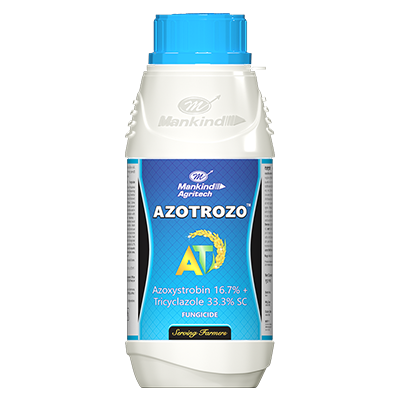
Agriculture faces several challenges, including pest infestations and crop diseases, which threaten crop yields and food security. Two essential agricultural chemicals that play a critical role in combating these issues are fungicides and cypermethrin insecticides. Fungicides are used to prevent and control fungal diseases, while cypermethrin is a powerful insecticide that targets a range of insect pests. Together, they contribute to healthy crops and higher productivity, ensuring sustainable agriculture.
This article explores the importance, benefits, and applications of fungicide chemicals and cypermethrin insecticides, while highlighting their proper use in modern farming.
Fungicide Chemicals: Purpose and Applications
What Are Fungicide Chemicals?
Fungicides are chemical compounds designed to prevent, eliminate, or inhibit fungal growth that can damage crops. They are widely used in agriculture to manage diseases caused by fungi, such as blights, rusts, mildew, and leaf spots.
Types of Fungicides
- Contact Fungicides:
- Provide protection by remaining on the surface of plants.
- Example: Chlorothalonil, which prevents fungal spore germination.
- Systemic Fungicides:
- Absorbed by plants and transported through their tissues for internal protection.
- Example: Hexaconazole, which offers both preventive and curative action.
- Broad-Spectrum Fungicides:
- Effective against multiple types of fungi.
- Example: Copper-based fungicides used across various crops.
- Specific Fungicides:
- Target a specific group of fungal pathogens.
Benefits of Fungicide Chemicals
- Prevent Crop Losses: Protect plants from fungal infections that can destroy yields.
- Improve Quality: Ensure crops remain healthy, free from spots, rots, or discoloration.
- Support Sustainable Agriculture: Fungicides help farmers manage diseases efficiently without the need for excessive manual intervention.
- Reduce Economic Risks: Preventing fungal outbreaks protects farmers from financial losses.
Application of Fungicides
Fungicides are applied through spraying, dusting, or seed treatments. They are widely used in fruits, vegetables, cereals, and ornamental plants. Effective disease management with fungicides involves the following strategies:
- Preventive Application: Treating crops before infections occur.
- Timely Monitoring: Regular field inspections to detect early signs of disease.
- Resistance Management: Rotating fungicides with different modes of action to prevent resistance buildup in fungi.
Cypermethrin Insecticide: Purpose and Applications
What Is Cypermethrin?
Cypermethrin is a synthetic pyrethroid insecticide known for its effectiveness in controlling a broad range of insect pests. It mimics the natural pyrethrins found in chrysanthemum flowers but is more stable, offering long-lasting insect control.
How Cypermethrin Works
Cypermethrin affects the nervous system of insects, causing paralysis and eventual death. It targets pests like aphids, caterpillars, beetles, mosquitoes, and flies, making it suitable for both agricultural and domestic use.
Benefits of Cypermethrin Insecticide
- Broad-Spectrum Control: Effective against a wide range of insect species.
- Quick Action: Works rapidly to neutralize pests, preventing crop damage.
- Long-Lasting Effect: Provides residual protection for several days to weeks after application.
- Flexible Use: Suitable for use in agriculture, households, and public health programs.
Applications in Agriculture
Cypermethrin is widely used on cotton, vegetables, fruits, and cereals to control chewing and sucking pests. It can be applied through foliar sprays or as part of integrated pest management (IPM) programs. Proper use involves:
- Monitoring Pest Levels: Apply when pest populations reach a threshold level.
- Precision Application: Ensuring the correct dose to avoid harming beneficial insects.
- Safety Measures: Wearing protective gear during application to reduce exposure.
Best Practices for Using Fungicides and Cypermethrin
Both fungicides and insecticides are effective when used properly. However, improper use can lead to problems such as chemical resistance, environmental harm, or residue issues. Here are some best practices for their application:
- Follow Label Instructions: Adhere to recommended dosages and timings for effective results.
- Integrated Pest and Disease Management: Combine chemical solutions with other control methods like biological agents or crop rotation.
- Resistance Management: Rotate chemicals with different modes of action to prevent pests and fungi from developing resistance.
- Environmental Considerations: Use chemicals judiciously to minimize harm to pollinators and aquatic ecosystems.
- Personal Safety: Farmers should wear protective clothing and equipment when applying these chemicals.
Challenges and Considerations
While fungicides and cypermethrin insecticides offer significant benefits, their use must be carefully managed to avoid unintended consequences:
- Resistance Development: Overuse can lead to resistant strains of fungi and insects, making control more difficult.
- Environmental Impact: Pesticides can harm non-target organisms like bees and aquatic life if not used responsibly.
- Residue Issues: Excessive use can leave harmful residues on crops, affecting food safety.
- Health Risks: Improper handling of chemicals can pose risks to human health.
Conclusion
Fungicide chemicals and cypermethrin insecticides are essential tools in modern agriculture, playing a vital role in protecting crops from fungal diseases and insect pests. Fungicides ensure healthy crops by preventing diseases, while cypermethrin effectively controls a broad spectrum of pests. Their combined use enables farmers to increase productivity, improve crop quality, and reduce economic risks.
However, it is crucial to use these chemicals responsibly by following recommended practices to manage resistance, minimize environmental impact, and ensure safety. When integrated with other sustainable agricultural practices, fungicides and cypermethrin provide long-term benefits to farmers and support global food security.
By adopting the right strategies and using high-quality products like those from leading agrochemical companies, farmers can optimize their crop protection efforts and achieve sustainable agricultural growth.